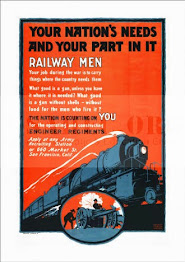On Memorial Day Weekend, the WK&S Railroad decided to operate thier rare 70-ton Witcombe switcher #602.
It was built as part of an order for 99 similar locomotives for the US Army Transportation Corps in 1944. These locomotives were numbered in the 8400-8498 series, bearing Whitcomb serial numbers 60406-60504. They were classified by Whitcomb as 65-DE-19a, the 65 standing for the gross weight in tons, the DE standing for diesel electric drive, and the 19a believed to bear a relationship concerning the production run number from the first run of that particular model. The Army specifications called for a locomotive to be able to run on any european main line, have a top speed of at least 45 mph, and must be capable of operating in multiple unit with similar locomotives.
It was constructed with serial number 60473and bore the number USATC #8467. While no definite information has surfaced, it is believed that #602 was shipped to France or Belgium for use during the war. These locomotives were shipped overseas in three large crates, one each for each assembled truck and one large crate containing the locomotive frame and carbody, totally assembled. From information in a Whitcomb locomotive manual, apparently the locomotives were equipped with standard AAR couplers for shipment to the Port of Embarkation, removed prior to shipment and european couplers applied upon delivery in Europe.
The locomotives served the military well during World War II. Whitcomb received an Army-Navy E Award in January, 1944, for outstanding production of these military locomotives. These locomotives were used to pull the first train into the city of Rome after it was taken from the Germans. They pulled the first train across the Rhine River after the Corp of Engineers rebuilt a bombed out bridge. Whitcomb 65 tonners pulled the first train into Paris after it was liberated by the Allies and pulled the first supply trains and hospital trains into Belgium after that country was taken back by the Allies. While they were cantankerous and somewhat a maintenance headache, particularly the Buda diesel engines, they ran and often ran well.
After VE day in 1945, the USATC decided that many of these Whitcombs were worth rehabilitating and being shipped to the Far East to fight in the war against Japan. 118 of these locomotives were shipped back to the US. By the time the locomotives arrived in the US, the hostilities ended in Japan. They arrived at Hawkins Point, near Baltimore, MD, and were stored pending disposition. With the war over, the US government disposed of these locomotives beginning in 1947. Most of the locomotives were sold through brokers to industrial operations or shortlines. The only modification that occurred to these locomotives was the removal of the european couplers and the installation of bolt-on AAR coupler pockets and couplers. Whitcomb, however, repurchased some of the locomotives. These locomotives were rebuilt and reclassified to 70-DE-26. These rebuilt locomotives now weighed 70 tons and were equipped with wider cabs, side walkway extensions, side handrails, a larger oil reservoir, and spring-equipped draft gear couplers. Most of the rebuilds also had their MU gear removed.
Upon return to the US, #602 was repurchased by Whitcomb and rebuilt to a 70 ton configuration. Gulf Oil Corp. purchased two of these locomotives around 1950 for use at its Port Arthur, Texas refinery. They were numbered 7 and 8. Sometime around 1960, #7 was shipped to Philadelphia, PA to replace a smaller locomotive. It was used to move salt and catalyst cars along Pennypacker Avenue and the package departments black oil rack. In 1979, #8 was shipped to Philadelphia. This was done because parts were becoming scarce, and hence expensive, for Whitcomb locomotives. #8 would be used as a parts engine and never operated in Philadelphia. In 1983, #7 was out of service for an extended period of time and Gulf rented another locomotive. Finally, in 1984, Gulf purchased a Trackmobile and retired #7 permanently. Both locomotives were subsequently donated to the Cornell Railway Historical Society of Cornell, NY, for preservation. Unfortunately, the cost of moving both engines was well beyond the means of the Society and they were offered to the Anthracite Railroads Historical Society, due to the L&NE/Whitcomb connection. In 1987, the WK&S was approached about the possibility of leasing #7. #8 would be scrapped in place as it was partially disassembled. Any salvageable parts from #8 could be removed before scrapping. It was agreed to paint the locomotive in an L&NE paint scheme and renumber the locomotive 602. It was moved to Kempton in the fall of 1988 and rehabilitated for operation in 1989.
WK&S Railroad decided to operate thier rare 70-ton Witcombe switcher #602.
Thursday, July 29, 2010
|
Labels:
locomotives,
videos
|
This entry was posted on Thursday, July 29, 2010
and is filed under
locomotives
,
videos
.
You can follow any responses to this entry through
the RSS 2.0 feed.
You can leave a response,
or trackback from your own site.
Subscribe to:
Post Comments (Atom)






0 comments:
Post a Comment